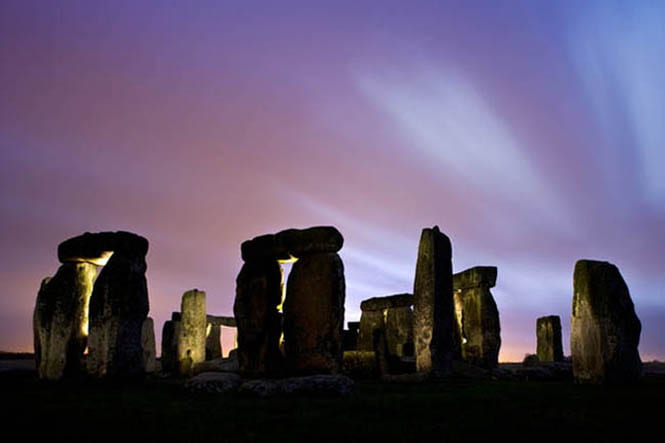
Mike Parker Pearson
British archaeologist Mike Parker Pearson and his research team had unprecedented access to Stonehenge and its surroundings, and his research findings are replacing centuries of speculation with facts. He will share them at an Assembly Series program at 4 p.m. Wednesday, March 27, in Steinberg Hall Auditorium.
Few places on earth conjure up more mystery than Stonehenge, the ancient monolith in southwestern England. Suggested reasons for the existence of this prehistoric ruin abound, and, in 2003, a large-scale, multiple-year initiative began to try to unlock its secrets. It was known as the Stonehenge Riverside Project and was led by British archaeologist Mike Parker Pearson, professor at the Institute of Archaeology, University College London.
There were plenty of reasons for embarking on such a long-range project. Surprisingly, only half of the actual site had ever been investigated, and then not always accurately recorded. Furthermore, the physical area of research had never been expanded beyond the Stonehenge site.
Parker Pearson and his research team had unprecedented access to the World Heritage Site and its surroundings. Earlier this month, he shared some of the project’s findings in a video on the Huffington Post website.
He will share them in person at an Assembly Series program at 4 p.m. Wednesday, March 27, in Steinberg Hall Auditorium on Washington University’s Danforth Campus.
His talk, “Stonehenge: New Discoveries,” this year’s Ferguson Science Lecture, is free and open to the public, and will include a special opportunity to purchase his book Stonehenge — A New Understanding: Solving the Mysteries of the Greatest Stone Age Monument, in advance of its American publication.
His talk, as well as his book, will provide fresh evidence that, according to the Amazon.com description, “replaces centuries of speculation about even the most fundamental mysteries of Stonehenge with hard proof … filling gaps in our knowledge about its builders and how they lived, clarifying the monument’s significance both celestially and as a burial ground, and contextualizing Stonehenge — which sits at the center of one of the densest prehistoric settlements in history — within the broader landscape of the Neolithic Age.”
Parker Pearson is an internationally renowned archaeologist with more than 10 books, seven edited or co-edited books, and more than 100 journal articles and book chapters to his credit. He has appeared in the National Geographic Channel documentary “Stonehenge Decoded,” and in the NOVA episode “Secrets of Stonehenge.”
His numerous professional distinctions for the Stonehenge Riverside Project include being named UK Archaeologist of the Year and receiving the Archaeological Research Project of the Year Award. The project was funded by National Geographic, the Arts and Humanities Research Council, the Royal Archaeological Institute, and the Society of Antiquaries and National Museum of Wales.
For information on this and other Assembly Series programs, visit assemblyseries.wustl.edu or call (314) 935-4620.
Additional links:
http://www.pbs.org/wgbh/nova/ancient/secrets-stonehenge.html
http://www.pbs.org/wgbh/nova/insidenova/2009/12/bluestonehenge.html